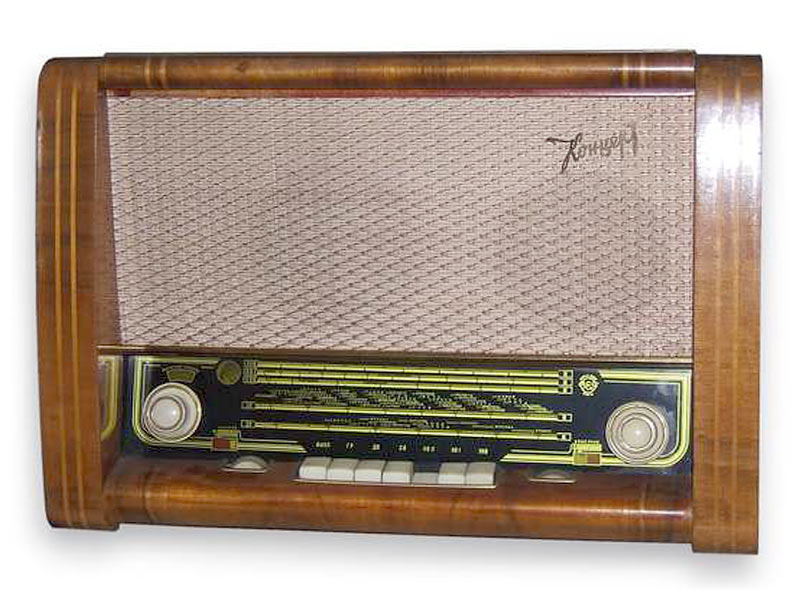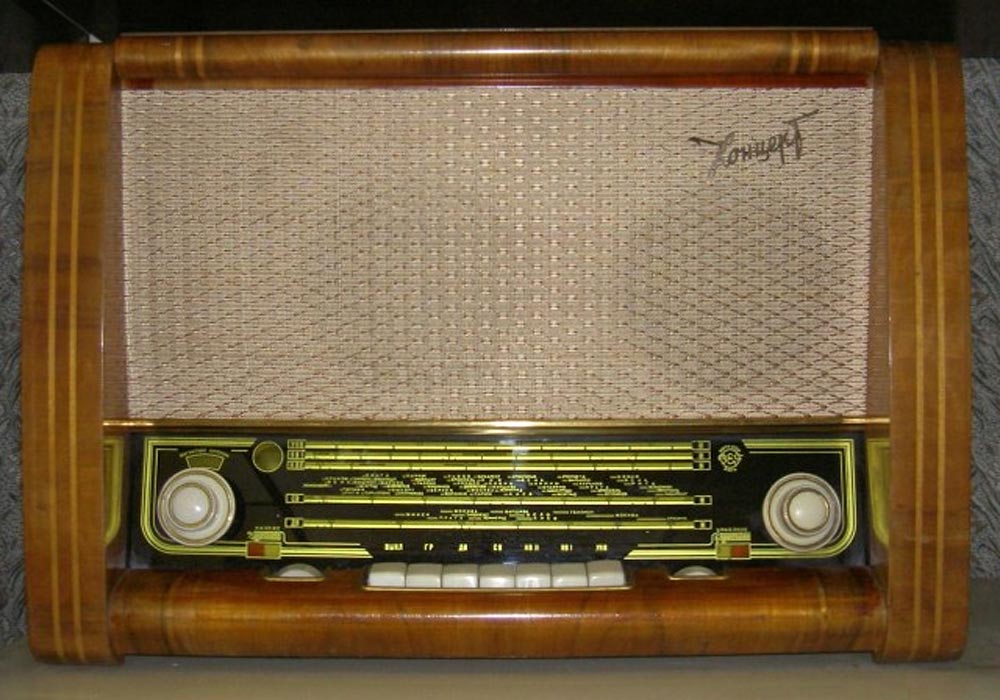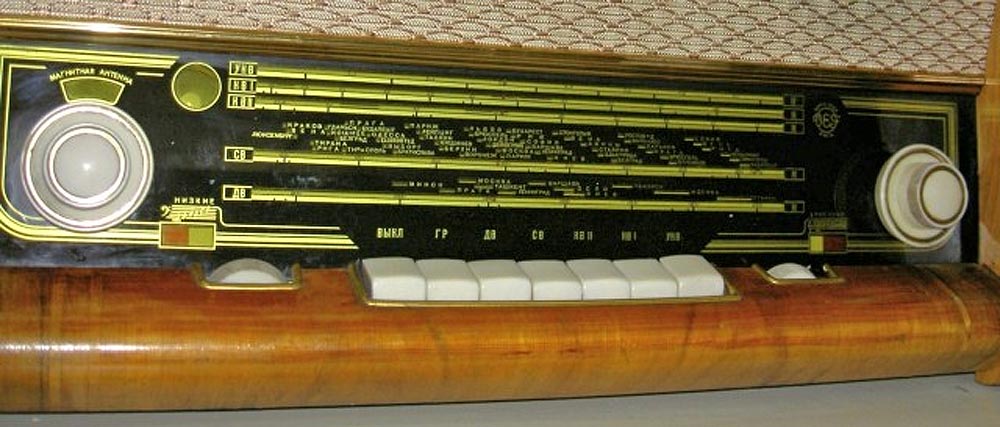Radiola network tube "Concert".
Network tube radiosDomesticRadiola network lamp "Concert" in the fall of 1955 was developed by the Riga State Electrotechnical Plant VEF. By 1956, the VEF plant had developed a number of receivers and radios based on finger lamps of various designs and parameters. Some of the blocks and chassis of these vehicles were unified. The devices had a rocker switch, a rotary magnetic antenna and a dipole, if there was a VHF range. Class III devices have two loudspeakers, Class II and higher devices have four. The names of receivers and radios were represented by precious stones: Almaz, Amethyst, Aquamarine, Crystal, Ruby, Sapphire, Topaz, Amber. There was a river series: Amur, Angara, Terek, Dvina and a musical series: Concert, Melody, Symphony and others. Some of the samples were transferred for production to other factories in the USSR, some were made only by an experimental batch. In the factory newspaper Vefietis (VEFovets) at the end of 1955, it was reported that the assignment of the Ministry of Radio Engineering Industry of the USSR to develop 15 models of radio equipment and manufacture their prototypes by the designers and production workers of VEF was successfully completed. Most of the devices developed were demonstrated at the 1958 World Exhibition in Brussels and were awarded prizes. Many developments were shown the following year at an exhibition in New York (1959). The "Concert" first class radiola was a prototype made in only a few copies. In 1957, the plant produced a limited series of "Concert" radios, while its external design did not change. The electrical circuit of the radio, the design and its technical parameters are similar to the radio "Lux". How many radios were produced is not established.

